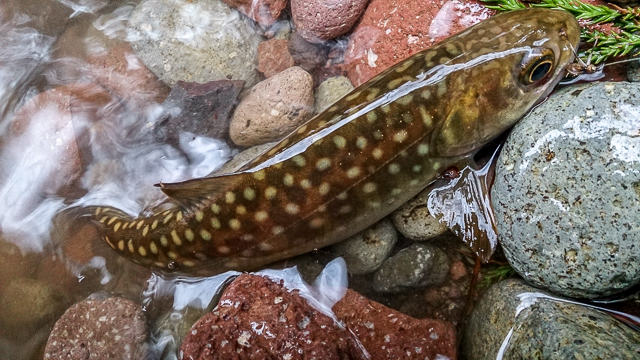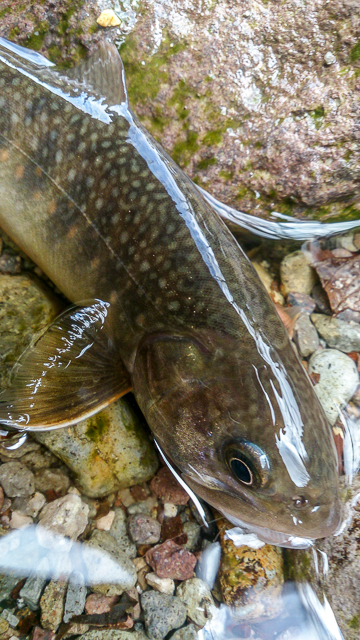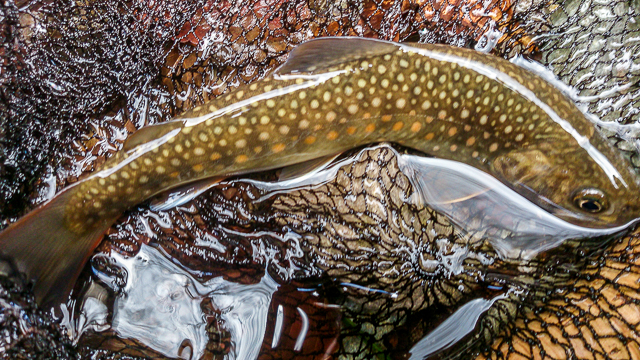
I BET you’ve never seen another one of these fish in the photograph above from our friend Kazuo Kurahashi (seriously – do you want to bet?). Not many people on the planet have.
You see this is no ordinary iwana – it is in fact a very rare, strain known as “gogi” and it is only found in a small area of West Japan.
Now I count myself pretty fortunate to have caught just one of the native “yamato” iwana from a tributary of the Toyama river at a spot shown to us by Masami Sakakibara (and which is a consolation for JP catching a marble trout in Italy when I only caught a hybrid brown ha ha…!!) – but there are actually a number of distinctive native strains (including gogi); as shown in this lovely little framed collection of carvings (below). This hangs in the entrance hall and stairs area of Sasaki-san’s family inn in Itoshiro and is a lovely bit of natural history (the carving on the middle, right is labelled “gogi” in Japanese katakana script, which is often used for animal names as well as borrowed foreign words)

From the hanko stamp at the bottom – I wonder whether these carvings were done by Shouchi Saitou (I will try to remember to ask him soon…).
Anyway, I asked Kura-san some questions about the rare gogi; and whether the widespread stocking of farmed “nikko” iwana (the most common and widespread form of iwana) may be a reason for the gogi’s rarity. While Kura-san felt that gogi had always been quite limited in the areas that they had

colonised, he did show me some pictures that made me a bit worried for the gogi’s future (based on my wild trout conservation/fishery science backround).
You see, the “nikko” strain iwana are definitely present (and probably stocked) in the same systems – as shown by this photo from Kura-san.
Everywhere else in the world that there is a widespread stocking of fertile strains of fish in significant numbers, there is a tendency for fish to interbreed.
This is what is happening to the European “Marble” trout that come into contact with expanding or stocked populations of fertile brown trout. They are threatened with being hybridised out of existence.
So it is a bit worrying to think that this could happen to some of the strains shown in the little framed carving hanging in Sasaki san’s inn.
This concern is, sadly, not too far-fetched – because Kura-san also supplied some other photographs of fish from the same stream. In those photos (including the one below), there are clear indications of interbreeding between the nikko and gogi strains. Basically, the appearance of the fish below does strongly suggest that it is a hybrid between the two strains. This, and the dramatic impacts of extensive catch and kill on the majority of Japanese keiryu and honryu (middle-sized and large/main rivers) is what makes Saitou-san’s efforts to create new spawning habitat and become a pioneer of catch and release (instead of catch, kill and stock) in the Itoshiro river system so important.

I really do hope, from a very selfish perspective as well as a more worthy one I admit, that there do continue to be gogi in the West of Japan that, maybe myself and John could possibly catch, admire and release.
Paul
